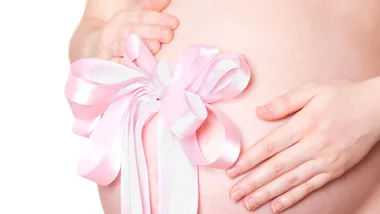Your body
Congratulations – you’re halfway through the journey towards motherhood! The top of the uterus is now level with your belly button: from now on, it will grow 1cm every week. It measures about 20cm, which may seem huge, but it’s nearly all baby!
Pain in the tum?
You should be feeling fit and well, but if you’re not glowing with health and happiness, don’t worry – pregnancy affects every woman differently. Not all women bloom; it’s equally normal to feel uncomfortable and out of sorts for the duration!
Equally, don’t fret if you have aches and pains in the lower abdomen: your muscles and ligaments are stretching to make room for your growing uterus.
Photo opportunity
You will probably be offered an anomaly scan around now. This gives the sonographer the chance to make sure your baby is growing normally. Her head circumference, abdomen, heart, brain, other organs and limbs will all be checked out. For you and your partner, it’s an exciting – and reassuring – opportunity to see your developing baby on screen.
Sex, lives and videotape
If your baby lies in the right position, the sonographer may be able to tell its sex. Don’t start decorating the nursery in baby blue or pastel pink yet though even the experts get it wrong!
Your baby
Your baby now measures 15cm from crown to rump and weighs about 260g: she has increased in weight 60 times in the past 10 weeks! She can roll, tumble, kick and suck her thumb.
Skin saver
The glands in your baby’s skin start to secrete a greasy, white substance called vernix caseosa (Greek for smelly cheese!). A mixture of fat and dead skin cells, this protects her skin against chapping caused by exposure to amniotic fluid. When your baby is born, her skin may still be covered in this slippery goo.
Making sense
Specific areas of your baby’s brain are developing, which will mature to give her the senses of smell, taste, hearing, sight and touch.
Her nervous system is also developing fast and she needs extra quantities of vitamin B6 to help it mature. So step up your intake by eating wheat germ, meat, fish, eggs, whole grains and B6-fortified cereals – all good sources.


.png?resize=380%2C285)
